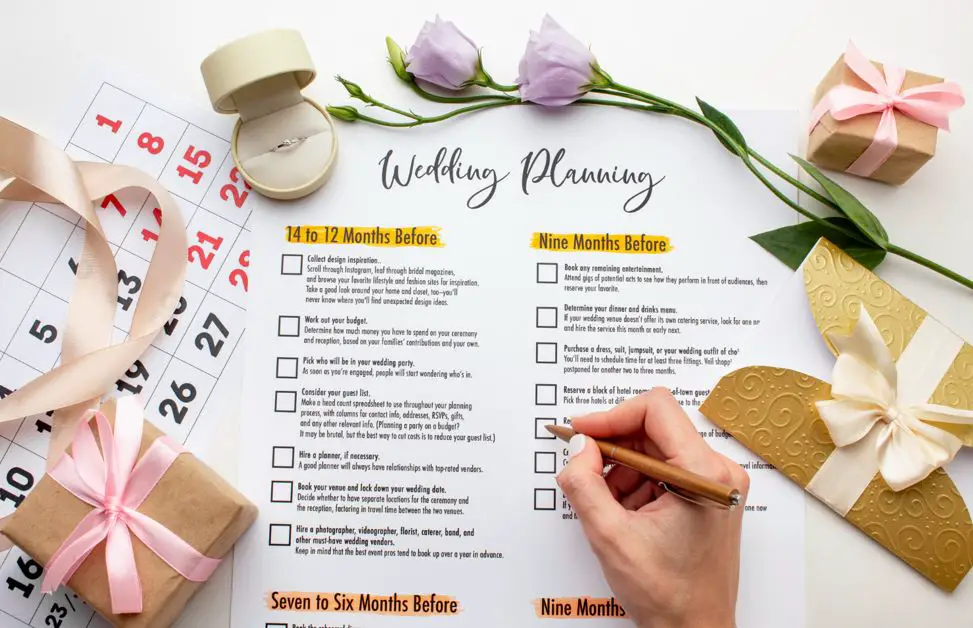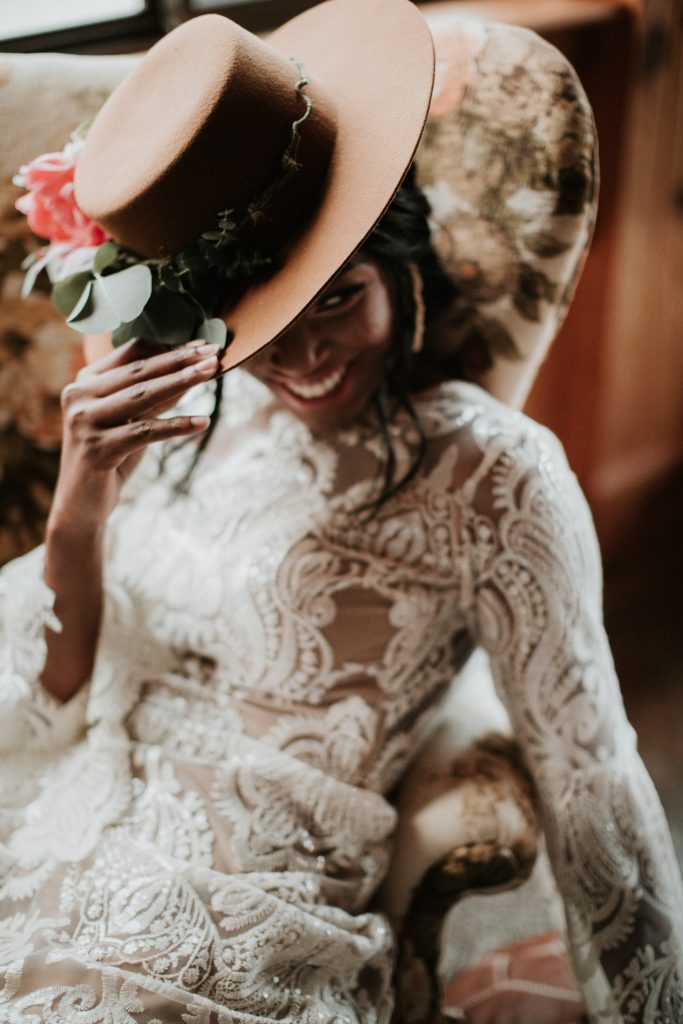Planning your dream wedding often starts with choosing the perfect dress. This guide will walk you through every detail of finding and preparing your wedding gown, from budgeting tips and choosing the right silhouette to planning alterations and selecting the ideal accessories.
Whether you envision yourself in a classic ball gown or a modern sheath, knowing the options—and the steps to achieve them—makes the journey to finding your dress more enjoyable.
We’ll also cover essential styling tips, like matching accessories to your dress’s neckline, choosing the right undergarments, and making those all-important final adjustments.
Let's get straight to the point
Choosing your dream wedding dress starts with setting a realistic budget, covering the dress, accessories, and alterations. Familiarise yourself with dress styles and necklines, from classic ball gowns to modern sheaths, to find the best match for your style.
Select accessories like jewellery, veils, and shoes that enhance your dress, and choose undergarments that ensure comfort and fit. Plan fittings 12–8 weeks before the big day, and consider hiring a steaming service to keep your dress pristine.
Add a bustle for easy movement at the reception. With thoughtful planning, you’ll create a flawless bridal look for your unforgettable day!
1. Making A Wedding Plan And Budget

Planning a wedding dress purchase starts with setting a budget. Weddings can be costly, so discussing finances with your partner is critical. Set a comfortable spending limit for all your bridal attire, including the dress, accessories, undergarments, and alterations.
Creating A Budget Breakdown
Begin by splitting your budget across each expense category:
- The Dress: Allocate a portion of your budget for the dress itself, considering if you’ll buy a new, pre-loved, or rental gown.
- Accessories: Think about jewellery, veils, and shoes that will complete your bridal look.
- Alterations: Account for potential alterations, as a perfect fit is essential.
- Undergarments: Proper undergarments provide comfort and help the dress fit well.
With a clear budget, you can focus on finding your dream dress without extra stress or financial surprises.
2. Understanding Wedding Dress Styles
Familiarising yourself with different wedding dress styles makes it easier to identify what will work best for you. Whether you're drawn to classic silhouettes or modern necklines, knowing the basics is key to narrowing down your choices.
Silhouettes And Shapes
- A-Line: Universally flattering with a fitted bodice that flows into an A-shaped skirt.
- Ball Gown: A dramatic style with a fitted bodice and a voluminous skirt, ideal for formal weddings.
- Mermaid: A fitted style that hugs curves and flares out at the knees, perfect for brides seeking a figure-hugging look.
- Sheath: A simple, straight silhouette closely following the body’s shape, suitable for minimalist brides.
- Empire: A high waistline, falling just below the bust, ideal for elongating the body.
Each silhouette creates a different look and feel, so choose one that aligns with your vision for your wedding day.
3. Types Of Wedding Dress Necklines
Necklines dramatically change the look of a dress. Here’s a breakdown of the popular options:
Strapless Wedding Dresses
Strapless dresses are a timeless choice, offering elegance and versatility. They are typically fitted around the bust and under the arms to provide a secure fit. To keep a strapless dress in place, opt for sturdy materials and ensure a snug closure at the back.
Halter Neck Wedding Dresses
Halter necklines have straps that meet behind the neck, highlighting the shoulders and arms. This neckline style offers a unique twist, combining an open neckline with the security of straps. It’s an excellent choice for brides wanting to add an unconventional touch to their look.
Sweetheart Wedding Dresses
Sweetheart necklines create a heart-shaped dip at the chest, giving any dress a feminine and romantic touch. This style suits brides with fuller busts, as the curves of the sweetheart neckline provide balance and softness to the overall look.
Square Neck Wedding Dresses
Two straps and a straight line across the bust form a square neckline, creating a clean and structured look. This neckline suits brides with rounder faces or fuller hips, emphasising the shoulders and adding balance to the overall silhouette.
High Neck Wedding Dresses
A high-neck dress offers elegance and modesty, covering the neck while adding sophistication. Brides with smaller busts often prefer this style, as it pairs well with fitted bodices and fishtail skirts to create a sleek silhouette that elongates the body.
V-Line Wedding Dresses
The V-neckline, created by two diagonal lines from the shoulders, adds length to the torso by drawing the eye downward. This style is ideal for brides seeking a longer, leaner silhouette and can range from subtle dips to plunging necklines, depending on your preference.
Combination Neckline Wedding Dresses
Combination necklines blend two or more styles, offering a unique, custom look. A strapless or sweetheart base with sheer fabric at the neck creates a soft, high-neck effect. These designs are perfect for brides looking to add twists to classic styles.
4. Choosing The Right Accessories
Accessories complete your wedding day look, so choose pieces that reflect your style and complement your dress.
Essential Accessories
- Jewellery: Think about earrings, necklaces, and bracelets that add a touch of sparkle. Match the jewellery to the neckline of your dress for a cohesive look.
- Veils: Choose a veil length that complements your dress style and the formality of your wedding, from fingertip veils to long cathedral veils.
- Shoes: Pick shoes that balance comfort and style, as you’ll wear them all day.
- Hair Accessories: From tiaras to floral crowns, hair accessories should match both your hairstyle and your dress’s overall vibe.
Undergarments And Their Importance
Proper undergarments are essential for achieving the right fit and comfort in your wedding dress. The right lingerie can ensure your dress sits smoothly on your body and enhances your silhouette.
Many bridal shops offer fittings to help you find undergarments suited to your dress style. Here are some key options to consider:
- Seamless Bras or Strapless Bras: A seamless or strapless bra can provide support without showing lines depending on your dress's neckline. For backless dresses, consider adhesive or low-back bras that offer support without being visible.
- Shapewear: Shapewear, such as high-waisted briefs, bodysuits, or shorts, can smooth the midsection and hips, creating a clean silhouette under fitted dresses. Choose lightweight, breathable options that you can comfortably wear for hours.
- Corsets or Bustiers: Corsets and bustiers are ideal for dresses with structured bodices, providing support and enhancing curves. They add definition to the waist and can be especially beneficial under strapless or sweetheart-neckline dresses.
- Slip or Petticoat: A slip or petticoat adds volume and prevents the fabric from clinging for fuller skirts or A-line gowns. Petticoats come in various shapes and can be adjusted to add fullness to the skirt.
- Bridal Bodysuits or Bodices: Bodysuits offer full support while smoothing the torso. They’re versatile and work well with most dress styles, especially those that require extra shaping around the bust or waist.
5. Planning Last-Minute Wedding Fittings
Bridal fittings help ensure your dress fits you perfectly. Schedule your final fitting about eight weeks before the wedding day to allow for any last-minute adjustments. Here’s a typical timeline for alterations:
- Initial Fitting: About 12 weeks before the wedding, start alterations to adjust the overall fit.
- Second Fitting: Schedule a follow-up fitting around eight weeks before the wedding to make minor adjustments.
- Final Fitting: A few weeks before the wedding, ensure everything is in place, and try on your complete bridal look, including accessories and shoes.
This schedule can be adjusted if you’re short on time. Some tailors can complete alterations within a week if necessary.
6. Hiring A Steaming Service For The Big Day
A freshly steamed dress is essential to avoid wrinkles and achieve a polished look on your wedding day. Many brides overlook this detail, but hiring a steaming service to ensure the fabric looks pristine is well worth hiring.
Check with your bridal shop or tailor, as some offer steaming services or can recommend a reliable provider.
7. Adding A Bustle For The Reception

The bustle is a practical addition to wedding dresses with long trains, allowing you to move comfortably during the reception. A bustle lifts and secures the train, preventing it from dragging or getting stepped on while you dance and mingle.
Types Of Bustles
There are different bustle options based on dress design:
- American Bustle: Fastened at the back, lifting the train and securing it to the outside of the dress.
- French Bustle: A more formal option that tucks the train under the dress, creating a sleek, layered effect.
- Austrian Bustle: A drawstring-style bustle that gathers the fabric vertically.
It’s helpful for your maid of honour or a trusted friend to learn how to bustle your dress at your final fitting so they can help on the day.
Conclusion
Finding the perfect wedding dress is a journey as unique as your love story. Each decision reflects your style and vision, from setting a realistic budget to choosing the right silhouette, neckline, and accessories.
Embrace every step—from dress fittings to final adjustments—to ensure you feel confident and comfortable on your special day.
The small details, like undergarments, a bustle, and final steaming, make a difference. With thoughtful planning, you’ll create a seamless, stunning bridal look that enhances the joy of saying “I do.” Here’s to your unforgettable day and the perfect dress to match!

